6 Best School Records for Genealogy
School records can fill in the gaps in missing vital records, as well as provide a rare glimpse into the daily lives of our ancestors. Guest blogger Margaret Linford shares her personal stories about how schools can connect us to our families. She also provides great tips on what kinds of records and resources to look for, and where you might find them.
The lazy days of summer are coming to an end.
The roar of school bus engines will again be heard echoing throughout towns and cities all across the country, delivering students to their respective schools. The smell of new books and freshly sharpened pencils will permeate the hallways as teachers greet their students and embark upon a new school year. The beginning of a new school year is a time of great anticipation. Excitement fills the air as school friends reunite, anxiously sharing their tales of summer adventures. Days spent lounging by the pool are abruptly replaced with early-morning alarm clocks and evenings occupied with homework.
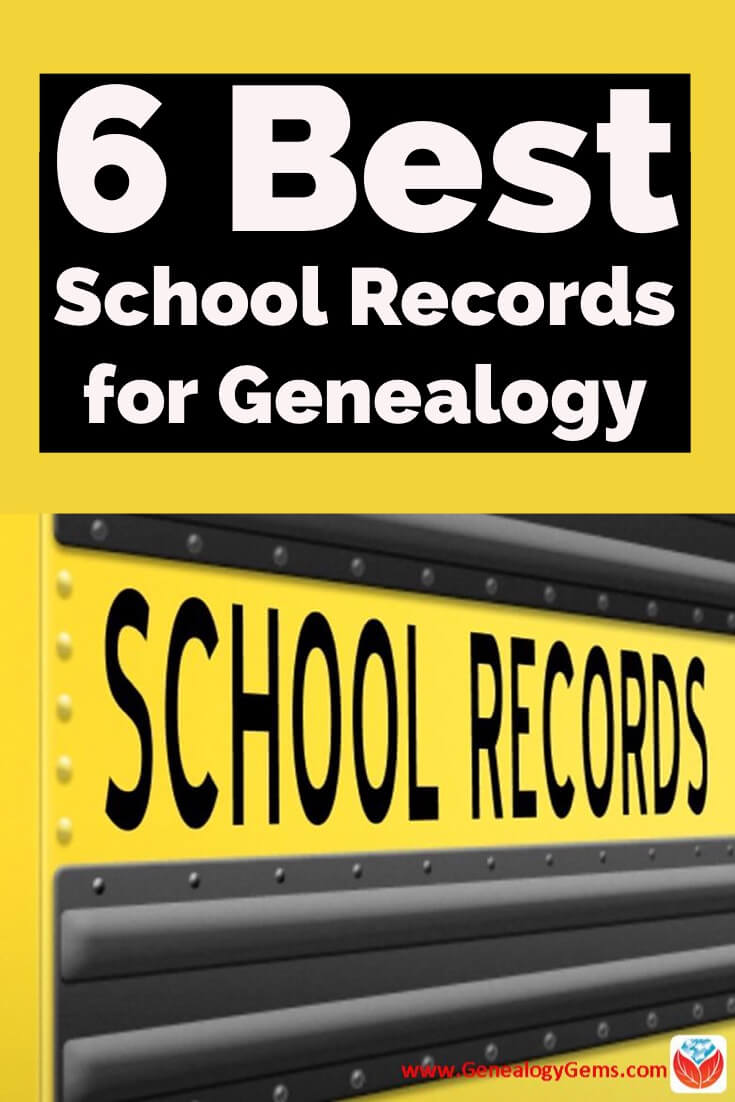
This year, I suddenly find myself the mother of a fifth-grader and a high-schooler. On several occasions, I have caught myself lamenting over the speed with which my children are growing up. I have occupied several afternoons looking back at their baby books and school pictures, wondering where the time has gone. I am nostalgic for the days of preschool and Kindergarten, when the biggest concern was their mastery of ABCs, how high they could count, and how well they played with others.
Two weeks ago, I had the unique experience of escorting my oldest daughter to an orientation at her new high school—my alma mater. As we sat in the auditorium, scenes from my teenage years flashed before my mind’s eye. I could envision a young girl playing bass clarinet with her high school band on the stage, tapping her toe in time to the rhythm of the music. As we left the auditorium, more flashes from the past came to mind. “This is the hallway where my friends and I would congregate between classes. This is the room where Mrs. Goodman did her best to teach us the laws of physics, despite our attempts at an afternoon nap. That is the window through which I spent many moments in Mrs. Scott’s class, daydreaming about what the future held.”
On the evening of my daughter’s orientation, I was shocked to discover that, although much had changed, some things were strikingly familiar. The room where I learned to type on an old-school typewriter, with ribbon and ink, had now been transformed into a computer lab. The chemistry classroom still occupied the same space, with cabinets stocked full of beakers and all manner of scientific paraphernalia, waiting to introduce students to the wonders of chemical reactions.
I caught my daughter, Amelia, sometimes glancing my way as we navigated the crowded hallways. It was apparent that she was attempting to read my mind and the emotions I felt as I returned to this space that contributed significantly to making me who I am. It was evident to her that I was preoccupied with a barrage of memories. She took advantage of the opportunity to conduct her own family history interview. “Mom, where was your locker? What has changed since you were here? What was your favorite class?” As she formulated each question, I realized that she had gained a vision of the importance of family stories. I smiled as we walked the hallways together that evening, sharing stories from my past and hopes for her future.
There are fleeting moments like this in each family—moments when past meets future. These occasions often pass us by, their significance unnoticed or unappreciated. These flashes in time are offered to us as immeasurable gifts, whose value increases with the passage of years. How many of us would love to have the opportunity of walking down the halls of our parents’ and grandparents’ schools, hearing them tell of how things had transformed and what had remained unchanged? While circumstances may prevent us from having this experience with our ancestors, I’d like to share with you six of the best school records which can assist you in understanding what your forebears were like, as students. These records tell their own stories. As we discover them, we forge emotional connections with those who came before us. We gain a greater understanding of their strengths and their weaknesses.
Here are 6 of the best school records for genealogy research:
1. School Census Records
School census records were maintained to assist school districts in allocating resources and planning for the future, among other things. Much like the United States Census, these records provide genealogists with important information. If you are lucky enough to find census records for a family with school children in the 1880s and 1890s, they can even act as a wonderful resource for tracing families during the elusive final two decades of the 19th century.
In Smyth County, Virginia, three of these important volumes were saved from the clutches of a trash can. The books contained the names of children attending school from the years 1885, 1910, and 1915. They had been placed in a box, to be thrown away, when a member of the local genealogical society spotted them. She immediately recognized their worth and asked if she might spare them. Thanks to this instance of being in the right place at the right time, the books were rescued.
The oldest of the three books is a relatively small, brown ledger book. It has a marbled cover. Inside the front cover is written, “School Census taken by J. B. Rhea, clerk of Board of 4th School Dist. Smyth Co. Va., between June 8th and July 20th 1885.” Underneath, Mr. Rhea has done the math and determined that there are 815 students enrolled in the 4th School District. The pages within are fragile and have become brittle with age. Upon these pages are listed all the children “between the ages of one year (and less) and twenty-one years.” This census is a valuable genealogical resource because it lists the names of parents, occupation of father, names and ages of each child in the family, whether or not the child can read and write, how much education the child has had and, most importantly, the birthplace of the father. Many of the fathers were born in Virginia or Tennessee. In some cases, there is genealogical “gold.” For instance, Alex Campbell, father of Robert, Bell, and Mary Campbell, was born in Scotland. Another father, Richard Goodell, was born in New York. He is working as a merchant in Smyth County in 1885. Charles F. Lincoln, a local “mechanic,” is listed as having been born in Massachusetts. This can be a key piece of information for family researchers.
These records may be found in libraries, historical societies, State Archives, and within collections at Ancestry, FamilySearch, Findmypast, and MyHeritage.
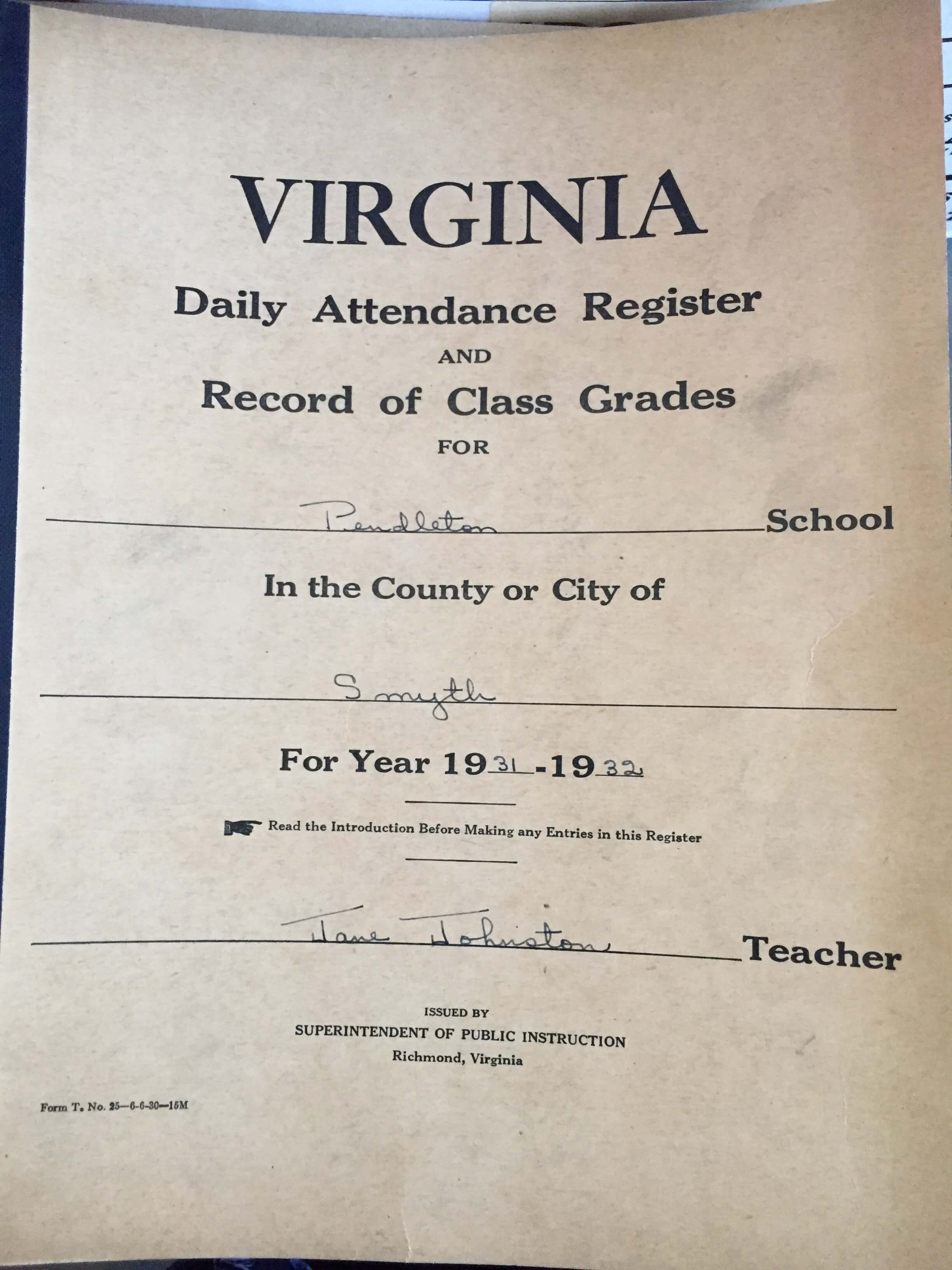 2. Daily Attendance Registers/Class Grades
2. Daily Attendance Registers/Class Grades
This record set contains precisely what the name implies—a register of attendance and grades. Each teacher was responsible for maintaining these records on a daily basis. Who was present and accounted for each day? Who was absent? What subjects were strengths? Where could they have improved? The quality of the records depends on the record-keeping of the teacher.
Recently, a filing cabinet full of these records was brought to my attention by our local Superintendent of Schools. He invited me to visit the county school board office and look through the old wooden filing cabinet, in an effort to determine whether or not the records might be of benefit to families conducting genealogical research. The records dated back to a time in our local history when one and two-room schoolhouses dotted the landscape. Children walked to school in these days. The classrooms were heated by pot-bellied stoves. The drawers of the cabinet were packed so tight that it was somewhat difficult to retrieve individual registers. Dust and cobwebs had not diminished the value of these records. Names of parents appeared beside each student, along with places of residence. A preservation plan is now being developed for the safe-keeping of these valuable family history resources. The countless hours of record-keeping by these teachers from long ago will not have been in vain. These records are typically found by contacting the local school administration office.
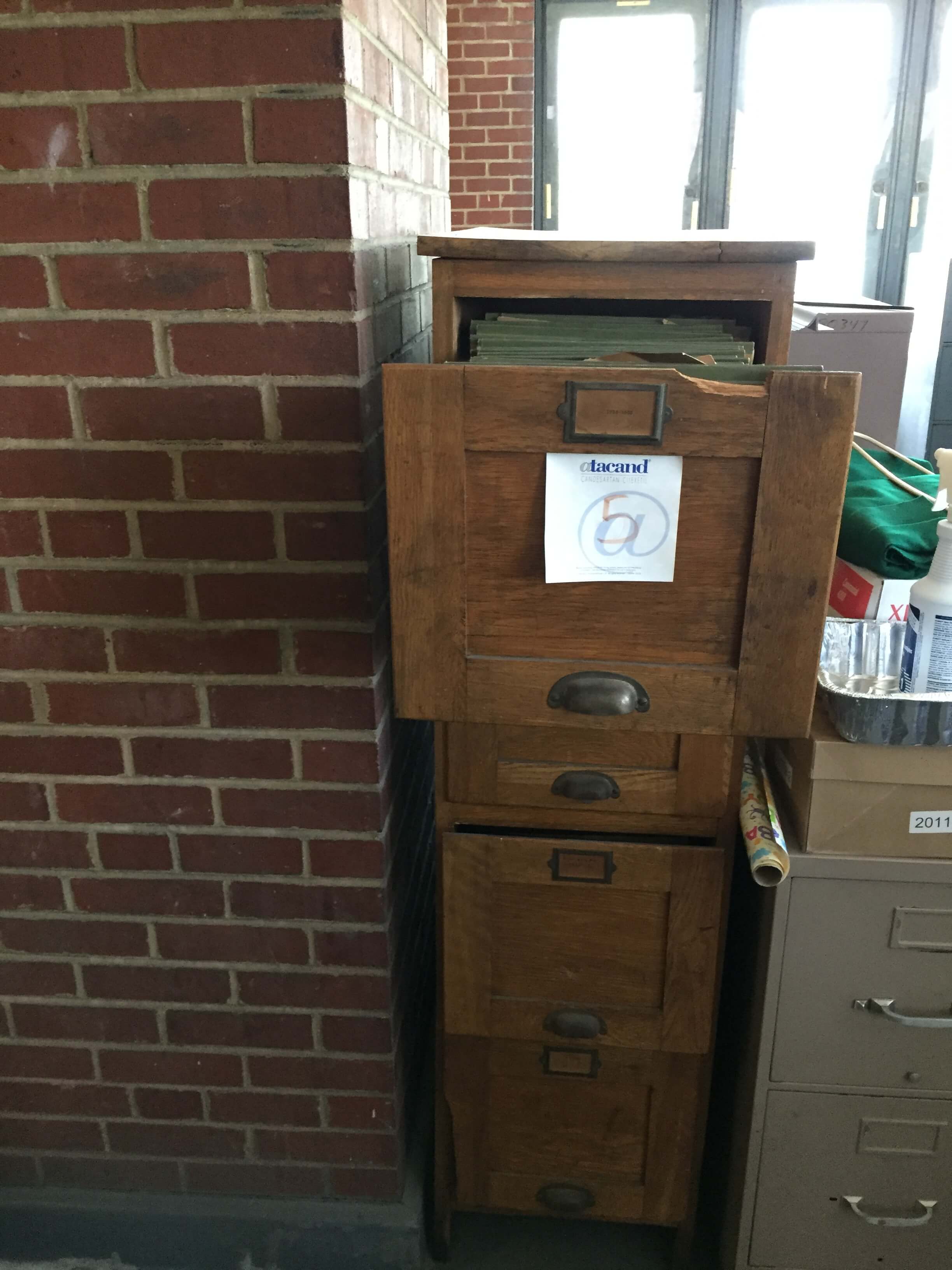
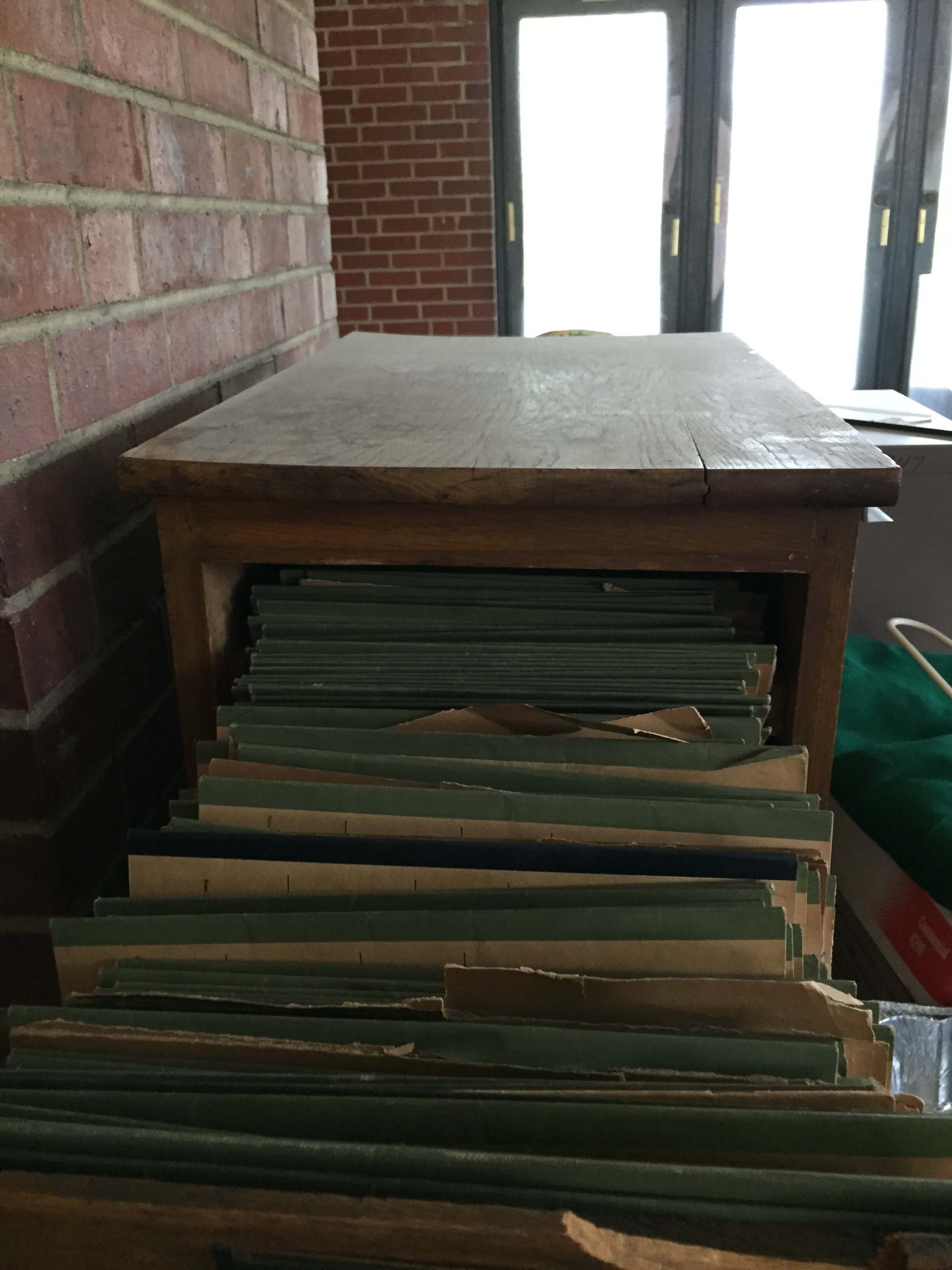
3. Report Cards
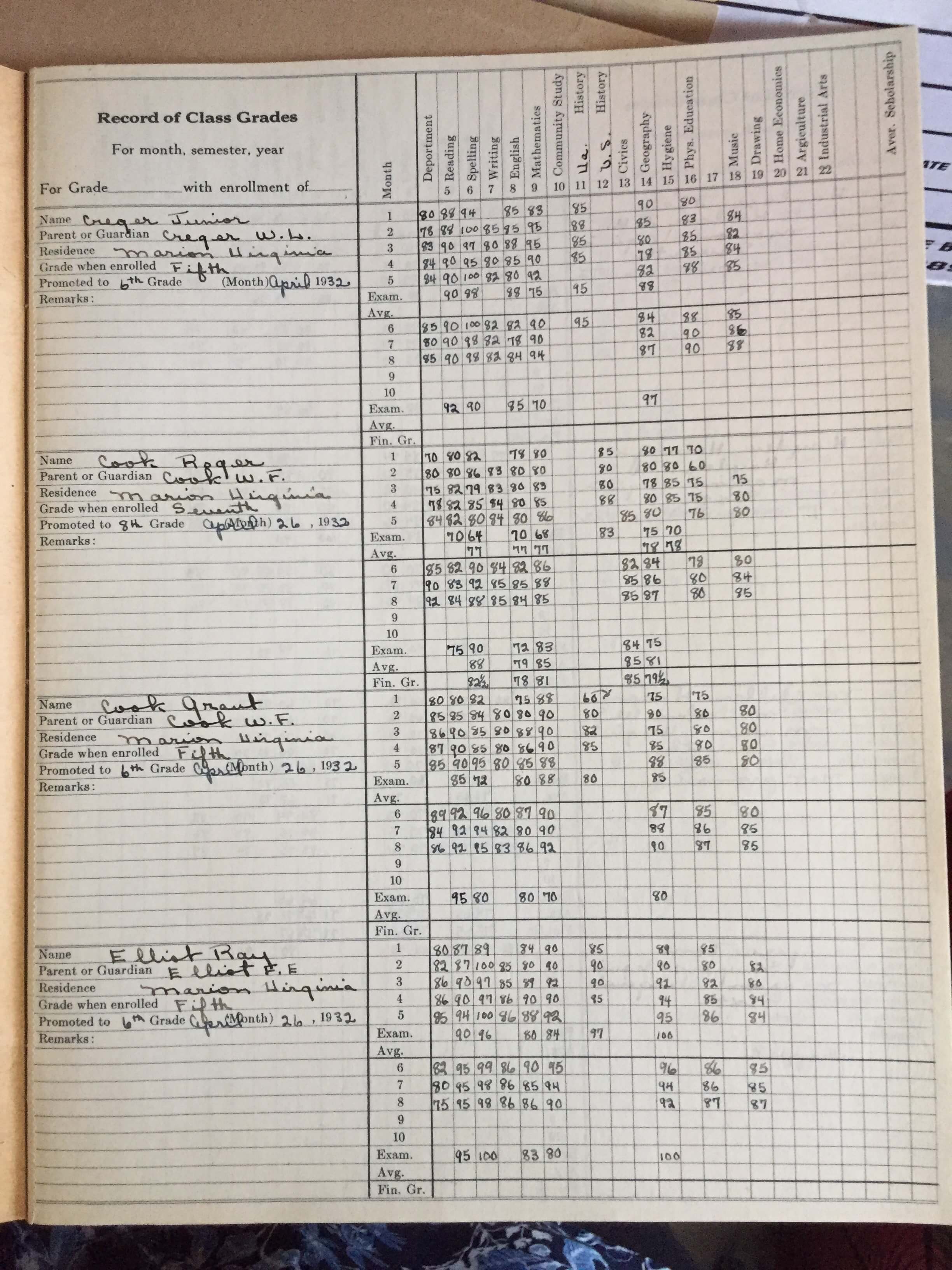 We are all familiar with this sometimes-feared record set. Many of us can relate to the trepidation we felt as we submitted our report cards to our parents for review every six to nine weeks. Would our grades withstand the scrutiny of our parents’ watchful eyes? Would they note the number of times we were tardy to class? What had our teachers written in the comment section? We may have breathed a sigh of relief upon realizing there was nothing incriminating written on the pages of our report cards. The signature of our parents served as a stamp of approval, which we dutifully returned to our teachers.
We are all familiar with this sometimes-feared record set. Many of us can relate to the trepidation we felt as we submitted our report cards to our parents for review every six to nine weeks. Would our grades withstand the scrutiny of our parents’ watchful eyes? Would they note the number of times we were tardy to class? What had our teachers written in the comment section? We may have breathed a sigh of relief upon realizing there was nothing incriminating written on the pages of our report cards. The signature of our parents served as a stamp of approval, which we dutifully returned to our teachers.
This record set is most often found within the walls of our own homes. There are times we may be tempted to dispose of any evidence of poor behavior or less-than-perfect grades, but these records serve to tell our stories and inspire our descendants. They may learn that perfection is not necessary for success, or that even their parents and grandparents were sometimes caught talking in class.
4. Newspapers
Local newspapers are essential in researching the histories of our local schools, sports, and other countless activities that accompany student life. Small town newspapers are well-known for covering special events and recognitions that otherwise might go unreported in larger cities. These smaller newspapers celebrate the victories of their local students and proudly intertwine school news with other important headlines.
Many schools publish their own newspapers, offering students a taste of what life would be like in the world of media and deadlines. Creativity and responsibility are cultivated in the environment of a school newspaper classroom. Early issues of a local Marion Senior High School newspaper tell the story of what it was like to be a high school student during World War II. One of the headlines in the May 22, 1944, issue of The Hurricane Junior, was particularly interesting.
Excerpt from The Hurricane Junior newspaper
“Four Seniors Now Serve in U.S. Navy: Four members of the senior class are now on active duty in Uncle Sam’s forces. All four—James Snavely, Don Starling, Charles Daniels, and Herman Gullion—are volunteers in the Navy.
“James Snavely, the first to volunteer, received his ‘boot training’ at Bainbridge, Maryland, and is now studying to become a radio operator. Charles Daniels was initiated into the ways of the Navy at Sampson, New York, and is also studying radio engineering. Don Starling and Herman Gullion volunteered at the same time and were sent to the Great Lakes Training Station together. Both are now in the medical corps.
“Back home on recent furloughs, the boys found a warm welcome at the high school and were much in demand as speakers in their English and history classes, where they told of their new experiences.
“The senior class is proud of its first recruits, as well as of all the former Marion boys in the service, and wishes them all the luck in the world.”
How amazing it would be for the grandchildren of these men to discover this article decades later! Look for these records at your local historical society, library, newspaper office, and school.
5. Teacher Scrapbooks/Records
Teachers are a special group of individuals. They typically do not enter the profession for money. Instead, they have a passion for educating and are emotionally invested in the success of their students. It is no wonder that many of them maintain scrapbooks, or other collections, detailing the lives of the students they taught.
Last year, I learned that my former high school band director maintained impeccable records of his 30 years of service. He and his wife had preserved band programs, travel itineraries, competition notes, newspaper clippings, and countless photographs of three decades’ worth of band students. This collection was scanned and made available to the community via a Flickr album. It was met with great enthusiasm and appreciation for not only his years of dedicated service, but his preservation of the band’s history.
6. Yearbooks/School Photos
Yearbooks are some of the most sought-after school records. They contain the photographic history of not only a school, but the surrounding community. Upon discovering a yearbook for one of our parents or grandparents, we anxiously turn pages, looking for a familiar face or name. The sensation of being met with a younger version of a beloved countenance sometimes moves us to tears. Youth is brought into full view. We discover who they were before the responsibilities of adulthood demanded their full attention. The answers to these questions may be found in a yearbook: What clubs had they joined? Did they play any sports? Did they have a nickname? Who were their friends?
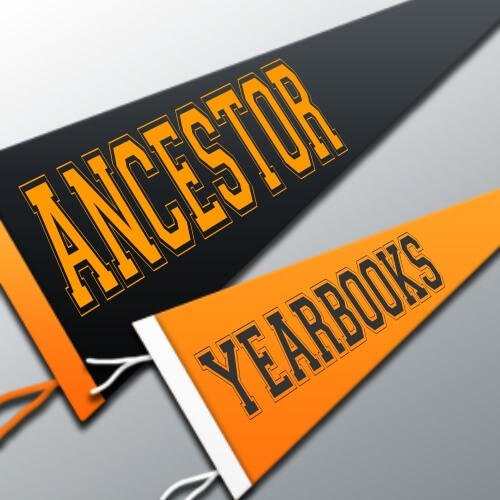 The experience of finding my great-grandfather, Francis McMurray, in a University of Michigan yearbook was one accompanied with great emotion. I had only ever seen pictures of him taken later in life. Based on these photos, I had a clear vision of a serious businessman. His yearbook photo offered a different perspective. I saw a much younger man in a baseball uniform, seated next to his teammates, with a full head of hair. In that moment, my perception of him changed. This experience taught me that our ancestors are much more complex than one snapshot, or one story that has been told. As we discover new records and new photographs, we gain a greater understanding of who they truly were. Our picture becomes more complete.
The experience of finding my great-grandfather, Francis McMurray, in a University of Michigan yearbook was one accompanied with great emotion. I had only ever seen pictures of him taken later in life. Based on these photos, I had a clear vision of a serious businessman. His yearbook photo offered a different perspective. I saw a much younger man in a baseball uniform, seated next to his teammates, with a full head of hair. In that moment, my perception of him changed. This experience taught me that our ancestors are much more complex than one snapshot, or one story that has been told. As we discover new records and new photographs, we gain a greater understanding of who they truly were. Our picture becomes more complete.
Most local libraries, historical societies, State Archives, and schools will have collections of yearbooks and school photos.
Just as each school year has a beginning, each school career has an ending. The records of these school years can offer some of the most satisfying discoveries in our family history research and should not be overlooked. I discovered a nostalgic reflection on school life in a college yearbook. It was written by my Uncle Weldon, who served as the editor. It stands as one more example of what treasures await us as we delve into these sometimes-neglected records. Perhaps, if he took me on a tour of his old high school, these would be the words I would hear. “We enter and we leave, taking with us memories that can only be forgotten by death. The school will always keep behind its solemn brick face our memories locked within its walls. Our voices will not cease to roar down the hollow halls, because our spirits live forever.”
Preserving the school records of your community
What success have you had in researching school records? Have you formed more emotional connections with your ancestors, thanks to these records? What is being done in your community to preserve these valuable collections? We’d love to hear from you! Share below in the comments if you’ve made a discovery in school records, and how you’re using them to share your family history with future generations.

Margaret Linford
Margaret Linford is a professional genealogist who specializes in the Mid-South Region of United States research and has logged over 20,000 research hours. Born and raised in Virginia, she has enjoyed traveling the world, and now lives in her childhood hometown with her husband and children. She enjoys teaching her children about heritage, taking them along on research trips and serving as President of the Smyth County Genealogical Society.




